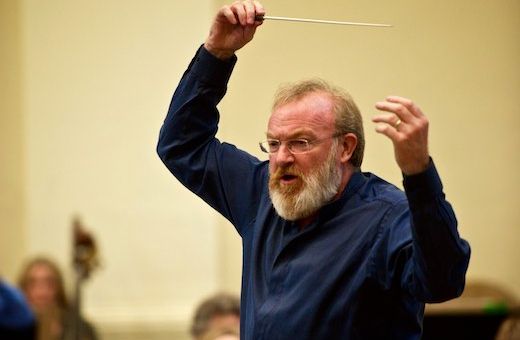The opening bars of a Requiem tell you all you need to know about the outlook of the composer and the tone of the work to come. So it is with Charles Villiers Stanford: not for him the dark-hued anguish of Mozart, emotional overload of Berlioz, melancholic mystery of Ligeti, hushed awe of Duruflé, or angry devastation of Zimmermann. Stanford’s opening Introit is light, relaxed, even breezy, its solo horn wistful, not remotely doleful. Composed in 1896 following the death of his friend Lord Leighton, the Requiem testifies to an idea of death as the complete opposite of tragedy: the triumph of a soul entering into infinite light and glory.

Martyn Brabbins and the combined forces of the City of Birmingham Symphony Orchestra and University of Birmingham Voices seized onto this as if their own souls depended upon it. Thus, the remainder of the Introit and the following Kyrie were a demonstration not of prayer but of supreme confidence, of the kind that can only come from they who have convinced themselves of not merely the possibility but the inevitability of salvation. In such a context as that, the Dies irae became a day of wrath to be welcomed, not feared (a day, perhaps, that can’t come quickly enough), heralded by brilliant trumpets and blazes of choral ecstasy. In the wake of this paean to divine judgement, Brabbins made the following Rex tremendae practically a love song, soprano Carolyn Sampson imbuing the text with tenderness, echoed clamorously by the chorus before settling into a lush, even heady, luxuriant conclusion.
All of which begged a couple of questions, the most obvious being quite why Stanford felt the need to compose a Requiem at all, unless to proffer an alternative to the more familiar expressions of sadness that usually accompany the text. Of equal importance was the question of meaning; the Kyrie, as already noted, no longer implored mercy but took it for granted, and in the Lacrimosa believability broke down completely: while the soloists attempted sincerity, the chorus sang the words as if with a smile rather than tears. Melancholy words have rarely sounded so joyous.
Nonetheless, if one buys into Stanford’s staunch, relentlessly positive attitude (or, at least, temporarily puts one’s reservations aside), the Requiem testifies to its belief with remarkable force. Baritone Ross Ramgobin sidestepped notions of grief and guilt in favour of lyrical, low-key majesty, though when the other soloists joined in it was hard not to feel they weren’t by now just rattling off a litany of platitudes. Likewise, Brabbins turned Domine Jesu Christe into a piece of stately grandiosity suitable for the entrance of a monarch, before segueing into a swaying dance. Here was the chorus at their best, playfully hocketting and letting rip in a demonstration of pure ebullient elation, richly supported by the orchestra. It felt as if we had travelled very far from the idea of a ‘requiem’, but equally it was impossible not to be impressed.
If the work’s concluding sections began to sound like a bit too much of a good thing – angelic happiness saturating every nook and cranny of Symphony Hall by this stage – this was only in keeping with Stanford’s unshakeably happy vision. Brabbins teased out flecks of poignancy mingled in the otherwise dreamy optimism of the Agnus Dei, but even here the music lost none of its magisterial swagger.
Considering the current state of the world, it’s difficult to accept such a frivolous, placid attitude towards death, music that practically dances on the grave. Yet while Stanford’s music may not convince, this performance left us in no doubt whatsoever about the strength of his convictions.


